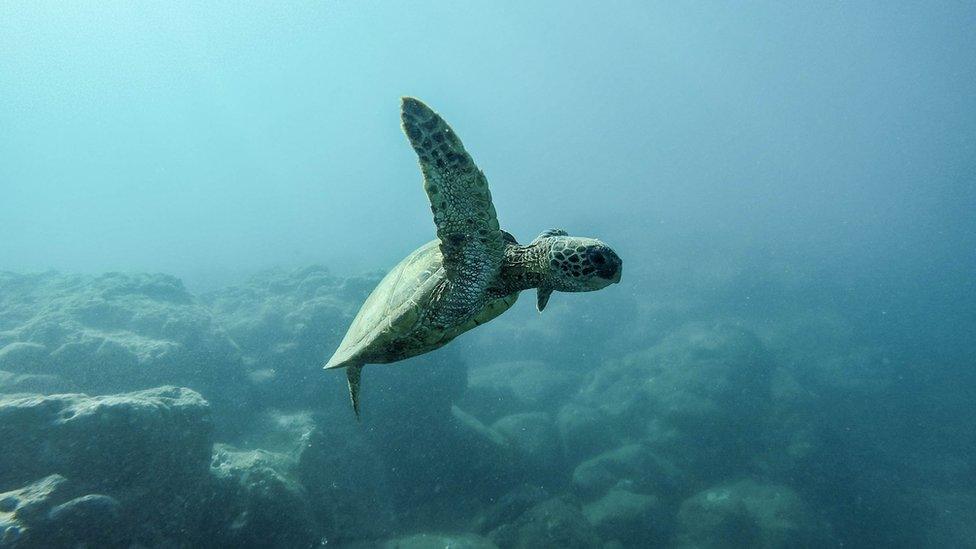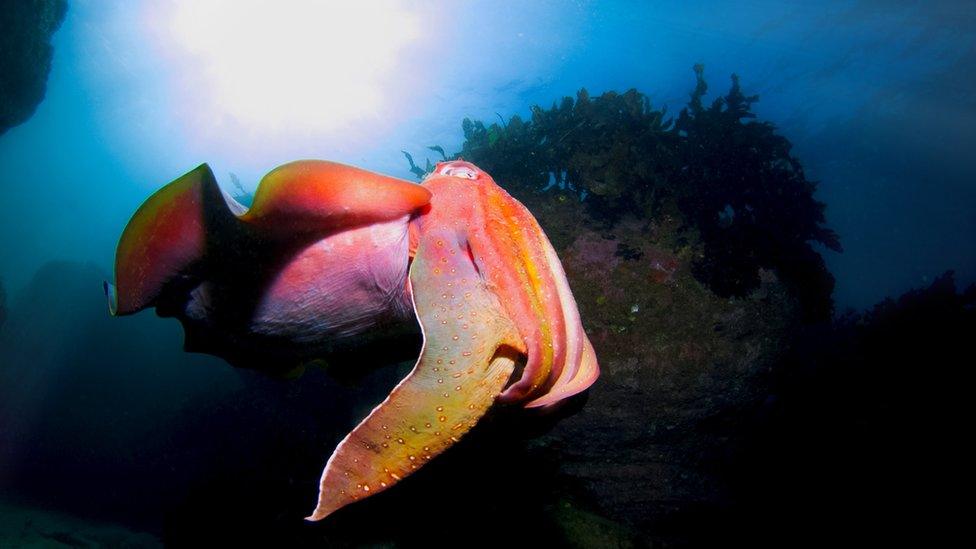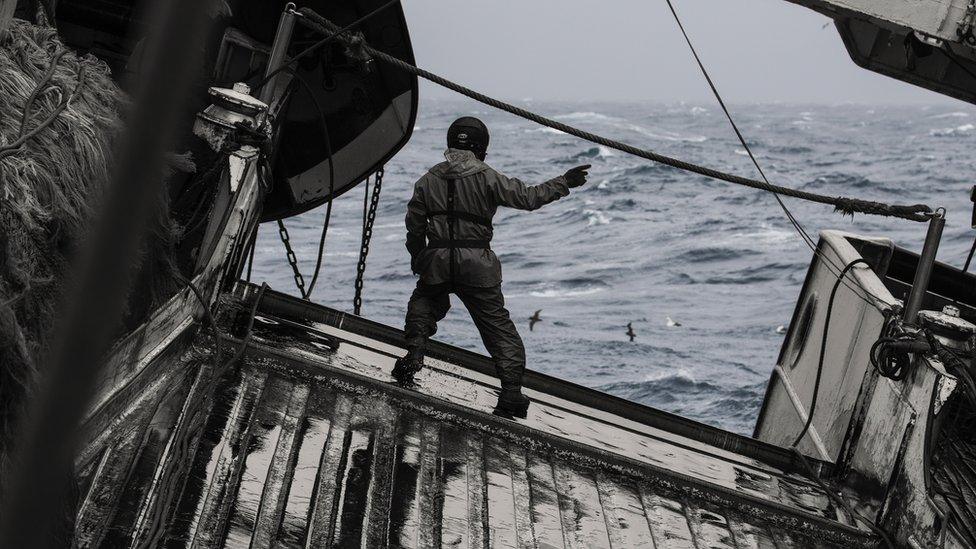UN treaty would protect high seas from over exploitation
- Published
- comments

The first significant steps towards legally protecting the high seas are to take place at the UN in New York.
These waters, defined as the open ocean far from coastlines, are threatened by deep-sea mining, over-fishing and the patenting of marine genetic resources.
Over the next two years, government representatives aim to hammer out a binding agreement to protect them against over-exploitation.
But several nations, including the US, are lukewarm towards the proposals.
Experts believe that the oceans of the world are vital for a number of reasons. Scientists say they capture around 90% of the extra heat and about 26% of the excess carbon dioxide created by humans through the burning of fossil fuels and other activities.
"The half of our planet which is high seas is protecting terrestrial life from the worst impacts of climate change," said Prof Alex Rogers from Oxford University, UK, who has provided evidence to inform the UN treaty process getting under way on Tuesday.

Scientists are very interested in rare and exotic creatures often found in international waters
"Yet we do too little to safeguard that or to protect the life within the ocean which is intrinsic to our collective survival. Protecting the biodiversity of the high seas by bringing good governance and law to the whole ocean is the single most important thing we can do to turn the tide for the blue heart of our planet."
So what exactly does 'high seas' mean?
The high seas are defined as the oceans that lie beyond exclusive economic zones. These zones are usually within 370km (200 nautical miles) of a country's coastline. These waters cover one and a half times the total land area of the planet and are home to some of the rarest and most charismatic species - but all countries have the right to navigate, fly over, carry out scientific research and fish on the high seas without restriction.
Aren't these waters already protected?
In 1982, the UN adopted the Convention of the Law of the Sea (UNCLOS) which, when it became active in 1994, regulated sea-bed mining and cable-laying to some extent. There are also a host of other international groups, including the International Whaling Commission that look after aspects of the seas, but there is no overarching treaty that would protect biodiversity or limit exploitation.

Deep-sea mining machines
What are the big threats to the high seas?
Researchers believe the high seas may be a major source of mineral resources in years to come. Just last year, a team of British scientists exploring an underwater mountain in the Atlantic Ocean discovered high concentrations of a rare and valuable substance used to build solar panels.
They're not the only ones - companies are also targeting deep-sea hydrothermal vents, home to a range of extremely rare and often exotic species.
The undersea world far from shore is also of growing interest because the strange and wonderful creatures that live there may lead to new pharmaceuticals - certainly a select group of research bodies believe this to be the case with 84% of patents related to marine species filed by just 30 institutions over the past 30 years.
It's the same story when it comes to fishing. Ships from 10 rich countries - among them Japan, Korea and Spain - take around 70% of the catch. Several studies using satellite data have shown the scale of fishing taking place away from national waters, including the practice of unloading catches on to other ships in international waters, something that allows boats to evade monitoring and enforcement.

Many fishing fleets operate on the high seas as they are unregulated compared with domestic waters
How would a new treaty work?
There would be three likely elements to any new treaty. Firstly, it would allow the setting up of Marine Protected Areas in international waters - something many countries have already done in their own jurisdictions. A new pact would also allow the carrying out of environmental impact assessments to guard against potential harm from activities on the high seas. In addition, a new, legally binding deal would allow poorer countries to benefit from any discoveries developed from marine genetic resources.
"A strong global ocean treaty would allow us to create a network of ocean sanctuaries to protect wildlife, ensure food security for billions of people and help us to tackle climate change," Sandra Schoettner, a marine biologist with Greenpeace, told news agencies.
Why are some governments reluctant to support the treaty?
The US rejected the UNCLOS treaty back in 1994 and is reticent about these new proposals. Some whale-hunting countries, such as Japan, Iceland and Norway, are said to be cautious about the idea because they fear it will restrict their fishing operations. Russia is also said to be dragging its feet.
Campaigners, though, are optimistic that eventually a deal will be reached.
"The current high seas governance system is weak, fragmented and unfit to address the threats we now face in the 21st Century from climate change, illegal and over-fishing, plastics pollution and habitat loss," said Peggy Kalas, from the High Seas Alliance,
"This is a historic opportunity to protect the biodiversity and functions of the high seas through legally binding commitments."